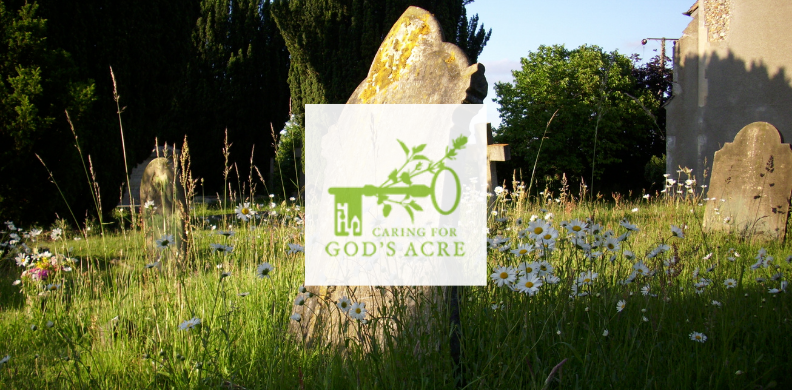
Looking at Lichens
November can be a quiet month for wildlife spotting apart from fungi, but have you ever taken a closer look at the lichens growing on the monuments within your churchyard? Forming a mosaic of colour these vary from simple, powdery scatterings and crusts to more elaborate leafy or even bushy structures. They are particularly rich and varied in unpolluted sites with clean air.
Lichens consist of two or more organisms living together as one. This is usually a fungus which forms the visible part of the lichen and within, protected by the fungal threads, are algal cells which can photosynthesise and provide food for the whole lichen. So, the fungus gets food and the algae gets shelter!
Churchyards are outstanding for lichens; there are approximately 2,000 lichen species in the UK, over 700 of these have been found in churchyards with half of them rarely if ever found elsewhere. Churchyard monuments provide a range of rock types with nooks and crannies caused by the monument shape and the carving of words and symbols. All of these nooks and crannies may have slightly different conditions of substrate, light, moisture and temperature which may suit different lichen species.
Lichens start to colonise as soon as something is set still, be it stone, wood or even rubber dustbin lids! Take a look at your older monuments and think how long the lichens may have been slowly growing there. The British Lichen Society has surveyed most churchyards so visit our atlas of biological records (burialgrounds.nbnatlas.org) and see how many have been found in churchyards near you.
Lichens don’t need us to look after them but do need unchanging conditions so please encourage people to resist scrubbing them off, which also scratches the stone and makes it erode quicker, try and prevent ivy from smothering them and if a monument needs moving, try and erect it in the same orientation so that the conditions of light and shade remain constant. Other than that, take a magnifying glass and slip into the amazing miniature world of lichens……
All the best, Harriet Carty
Diocesan Churchyard Environmental Advisor, harriet@cfga.org.uk,
www.caringforgodsacre.org.uk - individuals and groups in the diocese receive 20% members discount on all CfGA materials. Use the discount code diomem22
